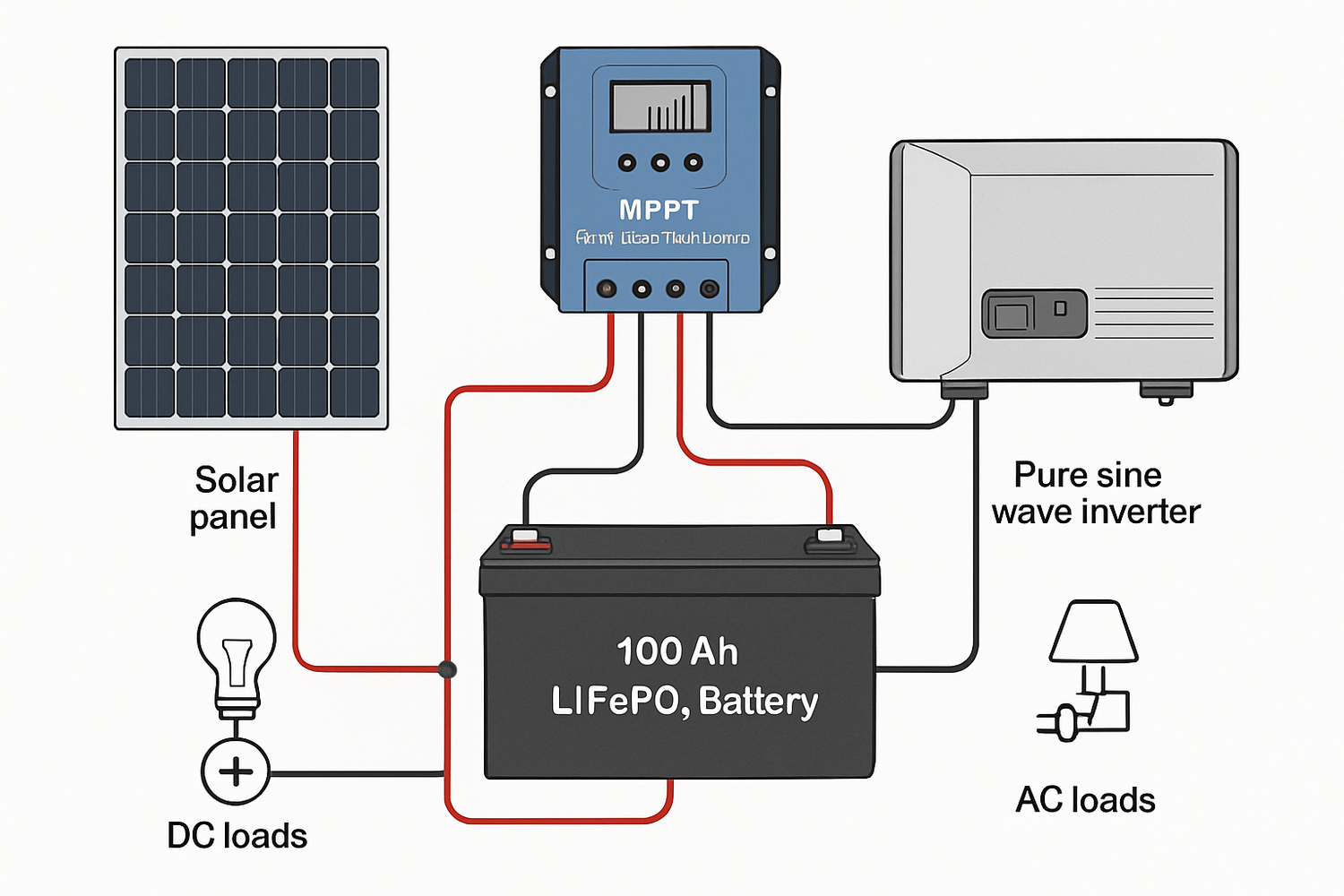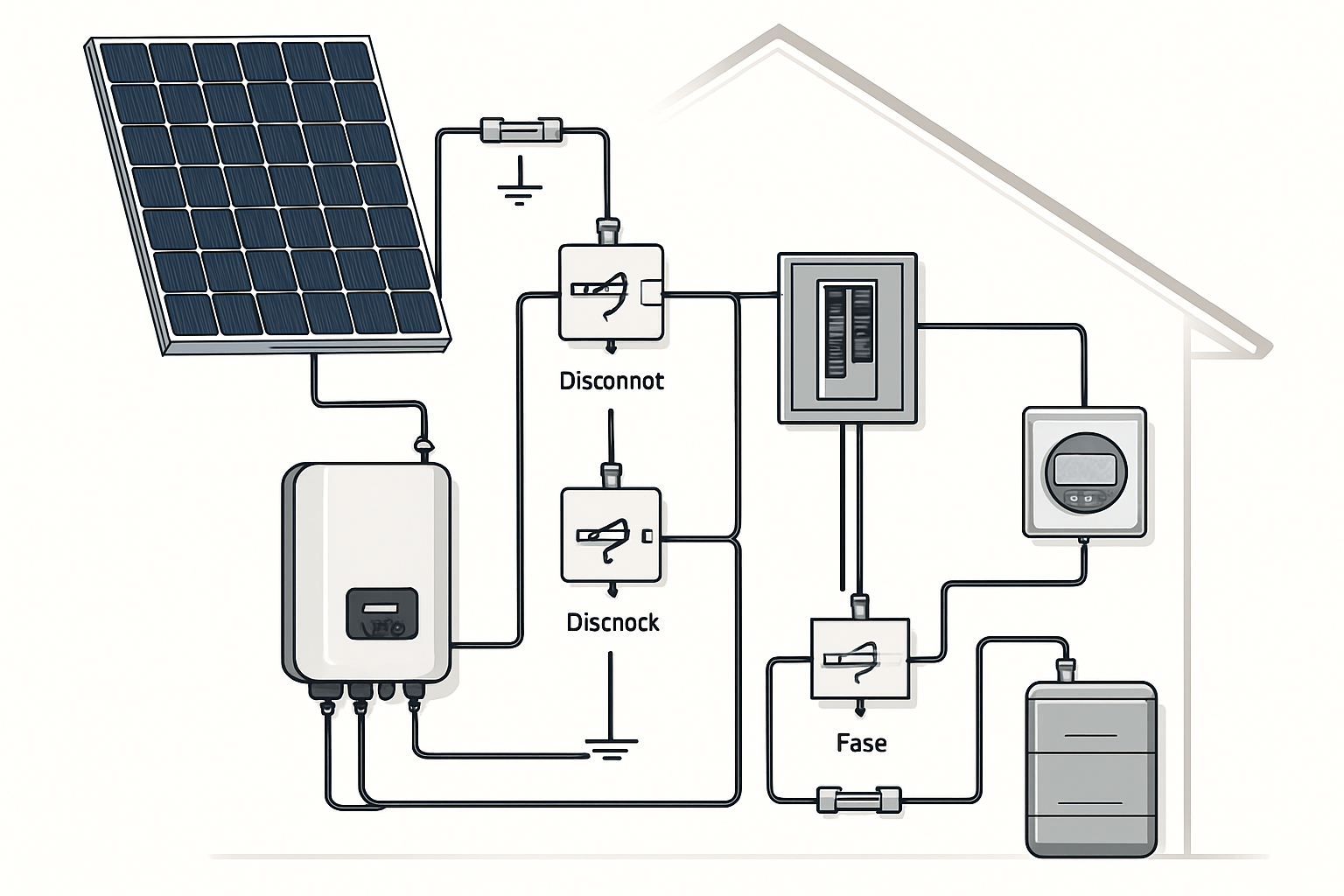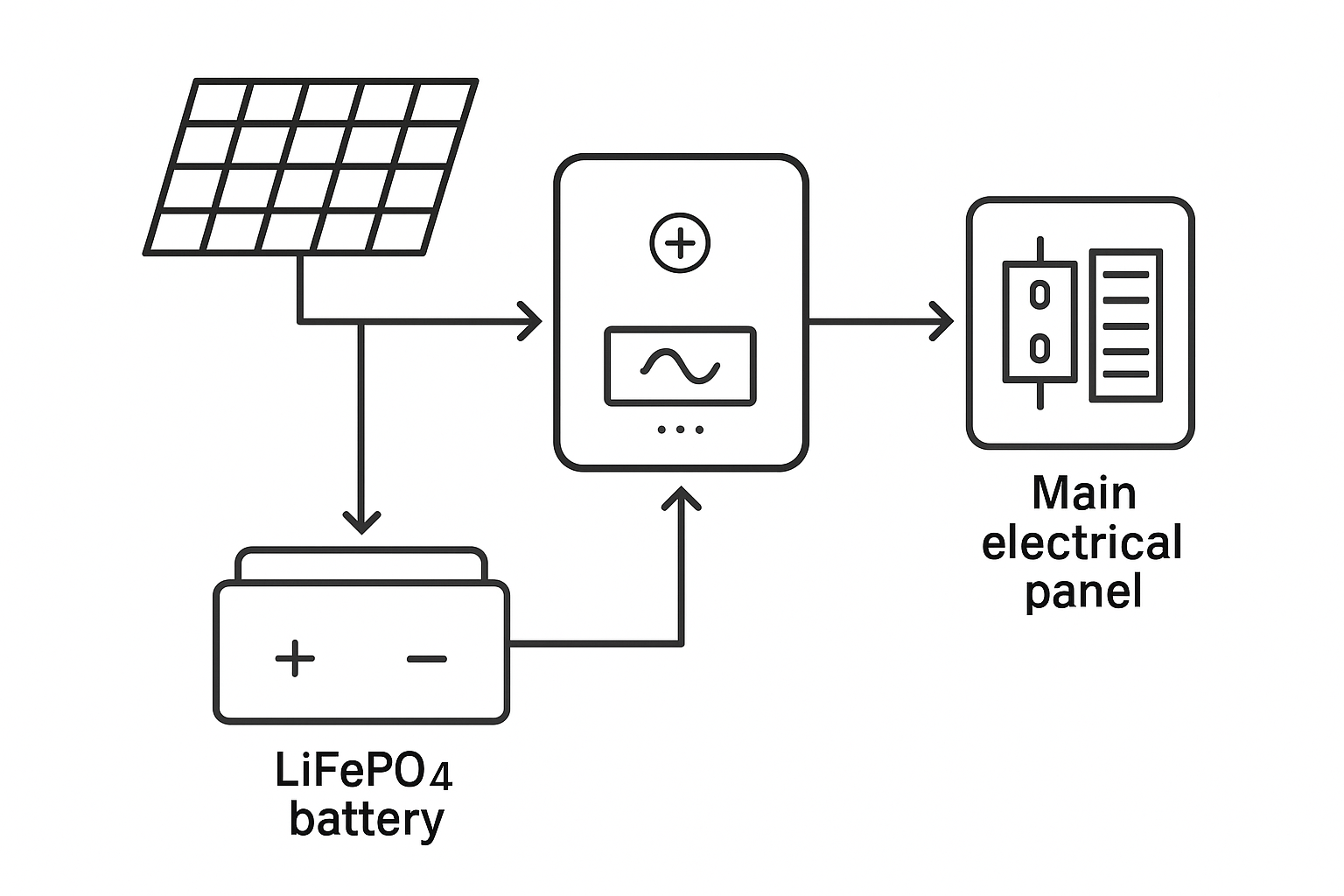A solar energy storage system diagram is the architectural blueprint for your power independence. It maps out how each component connects and interacts, ensuring safety, efficiency, and reliability. This case study focuses on a popular configuration: a system built around a 100Ah lithium-ion battery. This setup is a versatile choice for applications ranging from recreational vehicles to essential home backup power. You will gain a clear picture of the components, their functions, and how they unite to form a cohesive power solution.
Core Components in a Solar Energy Storage System Diagram
A functional solar power system relies on several key components working in harmony. Understanding the role of each part is the first step in creating an accurate and effective diagram.
The Solar Panel Array
The solar panels are the system's power generators. They capture sunlight and convert it into direct current (DC) electricity. The size of your array, measured in watts, determines how quickly you can recharge your battery and power your devices. For a 100Ah system, a 200-400 watt array is often a good starting point, depending on average sunlight exposure.
The 100Ah LiFePO4 Battery
The heart of the system is the 100Ah lithium iron phosphate (LiFePO4) battery. This component stores the energy generated by the solar panels for use when the sun isn't shining. LiFePO4 chemistry is favored for its safety, long lifespan, and high efficiency. A 12V 100Ah battery provides approximately 1.2 kilowatt-hours (kWh) of energy storage, a substantial amount for many off-grid and backup needs.
The Solar Charge Controller
The charge controller acts as the brain, protecting the battery by regulating the flow of electricity from the solar panels. It prevents overcharging and can also prevent the battery from draining too much. Maximum Power Point Tracking (MPPT) controllers are generally more efficient than Pulse Width Modulation (PWM) controllers, especially in cooler conditions or when panel voltage is significantly higher than battery voltage.
The Power Inverter
Most appliances run on alternating current (AC), while your battery stores power as DC. The inverter is the device that converts DC electricity from the battery into usable AC power. A pure sine wave inverter is recommended as it produces clean, stable power suitable for sensitive electronics like laptops and medical equipment.
Creating the 100Ah Lithium Ion Solar System Diagram
With the core components identified, the next step is to visualize their connections. A clear diagram prevents wiring errors and simplifies troubleshooting.
Mapping the Energy Flow
The flow of energy is logical and sequential. The diagram should clearly show the path: solar panels connect to the 'PV' or 'SOLAR' input of the charge controller. The 'BATTERY' output of the charge controller connects to the positive and negative terminals of the 100Ah lithium battery. Finally, the inverter connects directly to the battery terminals. Any DC loads, like 12V lights or fans, can be connected to the 'LOAD' output on the charge controller or directly to the battery (with proper fusing).
Wiring and Safety Mechanisms
Proper wiring and protection are non-negotiable for a safe system. The diagram must include fuses or circuit breakers at several key points:
- Between the solar panels and the charge controller.
- Between the charge controller and the battery bank.
- Between the battery bank and the inverter. This is especially important as inverters can draw very high currents.
The wire gauge (thickness) is also critical and depends on the current and distance. Using undersized wires can lead to voltage drop and a potential fire hazard. Always consult a wire sizing chart.
Sizing and Performance Calculations
An accurately sized system ensures you have enough power without overspending on unnecessary capacity. The process begins with understanding your energy consumption.
Calculating Your Daily Energy Needs
Start by listing all the AC and DC appliances you plan to run. For each one, multiply its power consumption (in watts) by the number of hours you expect to use it daily. Summing these values gives you your total daily energy requirement in watt-hours (Wh). This figure is essential for confirming that a 100Ah battery is the right size for your needs. The U.S. Department of Energy's Solar Futures Study highlights the rapid expansion of solar, making efficient system design more important than ever.
Battery Capacity and Depth of Discharge (DOD)
One of the primary advantages of LiFePO4 batteries is their high Depth of Discharge (DOD). You can safely use 80-100% of their rated capacity. In contrast, traditional lead-acid batteries should only be discharged to about 50% to preserve their lifespan. This means a 100Ah lithium battery provides nearly double the usable energy of a 100Ah lead-acid battery. As noted in an IRENA report, Electrification with renewables: Enhancing healthcare delivery in Mozambique, a DOD of 90% is a standard and reliable assumption for designing systems with lithium-ion batteries.
| Feature | LiFePO4 (Lithium Iron Phosphate) | Sealed Lead-Acid (AGM) |
|---|---|---|
| Nominal Voltage | 12.8V | 12V |
| Usable Capacity (DOD) | 80-100% | 50% |
| Cycle Life | 2,000 - 7,000 cycles | 300 - 700 cycles |
| Efficiency | 95-98% | 80-85% |
Component Sizing
Your charge controller's rating (in amps) should be based on your solar array's short-circuit current (Isc). Your inverter's rating (in watts) should be large enough to handle the combined wattage of all AC appliances you might run simultaneously. For a deeper analysis of how different components affect overall output, a comprehensive look at solar storage performance metrics can provide valuable insights.
System Applications and Scalability
A 100Ah lithium-ion solar system is a powerful and flexible solution suitable for numerous scenarios.
Common Use Cases
This system size is ideal for powering lights, fans, laptops, and small refrigerators in various settings. Popular applications include RVs, marine vessels, off-grid cabins, and as a home backup system for essential devices like routers, medical equipment, or a freezer during a power outage. Regulatory innovation is crucial for integrating these systems, as discussed in IRENA's Electricity Storage Valuation Framework, which helps accommodate higher shares of renewable energy on the grid.
Future System Expansion
A well-designed system allows for future growth. You can often expand your energy storage by adding another 100Ah battery in parallel to double your capacity. Similarly, you can add more solar panels, as long as your charge controller can handle the additional current. Planning for scalability from the start can save significant time and expense later.
Final Thoughts on System Design
A detailed 100Ah lithium-ion solar system diagram is more than just a drawing; it's a roadmap to a safe, efficient, and reliable power source. By carefully selecting high-quality components like a LiFePO4 battery and a pure sine wave inverter, and by methodically planning the wiring and safety features, you create a robust system tailored to your specific energy needs. This approach empowers you to achieve greater energy independence for your home, work, or recreational activities.
Disclaimer: This article provides general information and is not a substitute for professional electrical advice. Always consult with a qualified professional before designing or installing a solar power system.
Frequently Asked Questions
What is the main advantage of a LiFePO4 battery in this system?
The primary advantages of a LiFePO4 battery are its long cycle life (thousands of cycles compared to hundreds for lead-acid), high safety profile, greater usable capacity due to a high depth of discharge, and lighter weight. These factors result in better long-term value and performance.
Do I need a fuse between the solar panel and the charge controller?
Yes, it is highly recommended. A fuse or circuit breaker in this location protects the charge controller and system wiring from potential overcurrent conditions or short circuits originating from the solar panels, enhancing the overall safety of the installation.
Can I connect AC appliances directly to the battery?
No. Batteries provide DC power. To run standard AC appliances, you must connect an inverter to the battery. The inverter converts the DC power into AC power that your devices can use. Connecting an AC appliance directly to a DC battery will damage the appliance.





Leave a comment
All comments are moderated before being published.
This site is protected by hCaptcha and the hCaptcha Privacy Policy and Terms of Service apply.